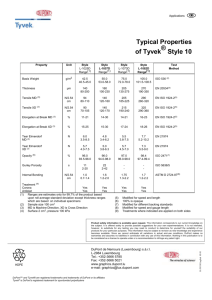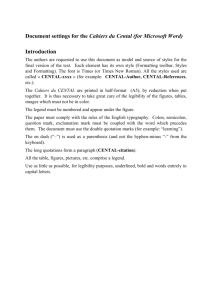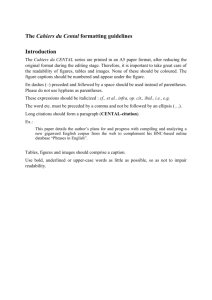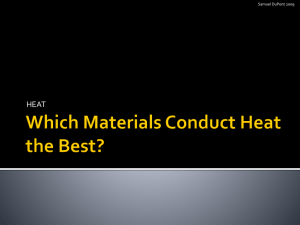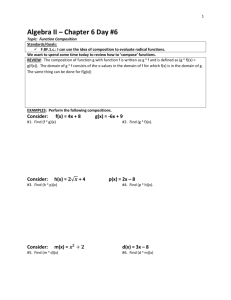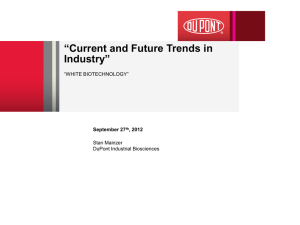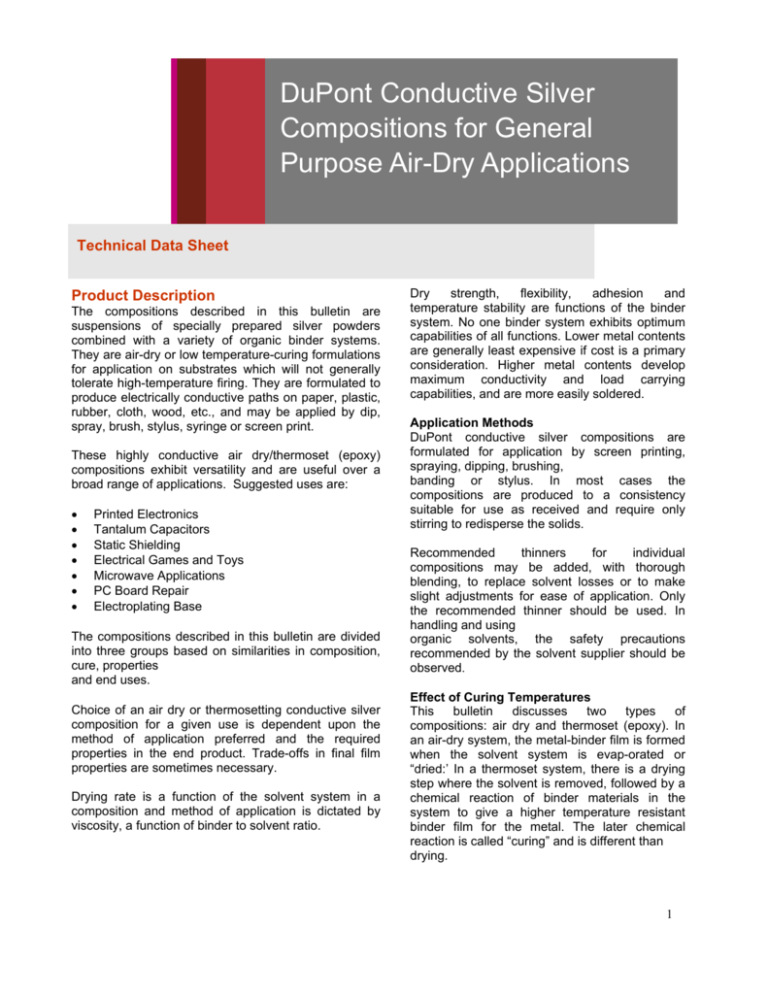
DuPont Conductive Silver
Compositions for General
Purpose Air-Dry Applications
Technical Data Sheet
Product Description
The compositions described in this bulletin are
suspensions of specially prepared silver powders
combined with a variety of organic binder systems.
They are air-dry or low temperature-curing formulations
for application on substrates which will not generally
tolerate high-temperature firing. They are formulated to
produce electrically conductive paths on paper, plastic,
rubber, cloth, wood, etc., and may be applied by dip,
spray, brush, stylus, syringe or screen print.
These highly conductive air dry/thermoset (epoxy)
compositions exhibit versatility and are useful over a
broad range of applications. Suggested uses are:
Printed Electronics
Tantalum Capacitors
Static Shielding
Electrical Games and Toys
Microwave Applications
PC Board Repair
Electroplating Base
The compositions described in this bulletin are divided
into three groups based on similarities in composition,
cure, properties
and end uses.
Choice of an air dry or thermosetting conductive silver
composition for a given use is dependent upon the
method of application preferred and the required
properties in the end product. Trade-offs in final film
properties are sometimes necessary.
Drying rate is a function of the solvent system in a
composition and method of application is dictated by
viscosity, a function of binder to solvent ratio.
Dry
strength,
flexibility,
adhesion
and
temperature stability are functions of the binder
system. No one binder system exhibits optimum
capabilities of all functions. Lower metal contents
are generally least expensive if cost is a primary
consideration. Higher metal contents develop
maximum conductivity and load carrying
capabilities, and are more easily soldered.
Application Methods
DuPont conductive silver compositions are
formulated for application by screen printing,
spraying, dipping, brushing,
banding or stylus. In most cases the
compositions are produced to a consistency
suitable for use as received and require only
stirring to redisperse the solids.
Recommended
thinners
for
individual
compositions may be added, with thorough
blending, to replace solvent losses or to make
slight adjustments for ease of application. Only
the recommended thinner should be used. In
handling and using
organic solvents, the safety precautions
recommended by the solvent supplier should be
observed.
Effect of Curing Temperatures
This
bulletin
discusses
two
types
of
compositions: air dry and thermoset (epoxy). In
an air-dry system, the metal-binder film is formed
when the solvent system is evap-orated or
“dried:’ In a thermoset system, there is a drying
step where the solvent is removed, followed by a
chemical reaction of binder materials in the
system to give a higher temperature resistant
binder film for the metal. The later chemical
reaction is called “curing” and is different than
drying.
1
While some compositions, if given sufficient
time, will adequately dry or cure at room
temperature, a more effective result is
achieved in much less time through low
temperature thermal exposure with a moderate
time/temperature drying or curing. Optimum
properties in air & dry and low-temperaturecure compositions are developed only after the
compositions have been properly dried or
cured. The drying or curing cycle for most
compositions is a function of time versus
temperature up to the point of degradation of
the organic system. In a system which will dry
or cure in from 12 to 16 hours at room
temperature (25°C) the same degree of drying
or curing can be achieved in less than 2 hours
at 60°C and in less than 1 hour at 100°C.
Storage and Shelf Life
Elevated temperature drying or curing of these
compositions can be continuous, box oven or
infrared. The heat should be applied from the
bottom up to permit internal
gases to escape before the top surface is
completely dry. “Flash drying,” a momentary
exposure to excessively high temperatures, is
likely to form a surface skin that traps internal
gases, resulting in bubbles in the dried film.
Coverage
Coverage of silver compositions depends on metal
content and thickness of application. Screen print
compositions printed with a 165- or 200-mesh
screen will generally result in a cured film 12-20 pm
(0.48-0.8 mil) thick. Brush band, dip or spray
application will normally result in film thickness of 13
-18 pm (0.5-0.7 mil). Thinner films (increases
coverage) can be applied by thinning the
compositions with the recommended thinner;
however, this will result in a cured film with a higher
sheet resistivity. Thicker films can be achieved by
brushing or spraying simply by applying more
material.
Failure to achieve rated conductivity indicates
either that the applied composition is too thin
with poor uniformity or that it has been
incorrectly dried and/or cured.
Group I and II compositions (air-dry) should be
stored at room temperature. Shelf life of material in
unopened containers is six months from date of
shipment with the exception of 4817N (three month
shelf life). Group III materials (thermoset) should be
refrigerated at 2”-4°C (35”-40°F). Shelf life of
material in unopened containers under these
storage conditions is three months from date of
shipment. Shelf life can be extended considerably
by storage at temperatures of -18°C (0°F) or below.
Materials should be allowed to return to room
temperature before opening to preclude moisture
condensation in the jar, to assure that the proper
viscosity has been reached, and to assure
consistent results with whatever cure cycle is being
used.
Soldering
Some DuPont air dried and thermoset
compositions are more commonly used as
conductive cements in lead attachment,
attachment of discrete components or in
simple
interconnections.
For
these
applications, solderability is not important and
is not generally recommended.
The coverage figures shown in Table III for Group I
and III compositions are for typical cured thickness
of 12-20 µm (0.48-0.8 mil) as outlined above.
Electroplating/Electroforming
The use of DuPont air dry/thermoset
conductive silver compositions as bases for
electroplating and electroforming is widespread. Ease of application, broad curing
ranges, high conductivity and dimensional
stability mark DuPont Group I compositions as
leaders in the field.
Group I
The coverage figures for Group II com-positions
are for typical cured thickness of 8-15 µm (0.32-0.6
mil) screen printed with a 325-mesh stainless steel
screen.
Group I conductive silver compositions exhibit a
moderately fast drying rate, good adhesion to most
substrates and high conductivity. They are used to
produce electrically conductive patterns on surfaces
of paper, film, plastic, rubber or wood as well as on
conventional ceramic substrates. They are widely
used in the manufacture of tantalum capacitors to
metallize the anode, making it a good electrical
contact.
For dip, spray, brush or screen print application,
Group I compositions can be cured in 16-20 hours
at room temperature (25°C) or may be oven cured in
1 hour or less at 60”-100°C.
2
4817N, for spray or dip application, is widely used in
electroforming, in electroplating, in static shielding, in
magnetic tapes and in the manufacture of tantalum
capacitors. Its low metal content places 4817N in a
moderate price range attractive for many applications.
4922N is a high metal content, high viscosity version of
4817N suitable for brush, stylus or machine banding
application where its somewhat higher conductivity is
desired. 4922N is widely used in circuit board repair and in
the manufacture of tantalum capacitors. 4922N may be
thinned with butyl acetate to achieve optimum application
properties.
4929N is a paste version of 4922N for screen print or stylus
application where it is desired to deposit a circuit or pattern
as in electronic circuitry, microwave applications, computer
punch cards, ballistic targets, or in toy and game circuitry.
Group II
Group II compositions were designed to be screen printed
on flexible films such as Mylar’” polyester. They are used to
produce highly conductive and highly flexible patterns on
various plastic films for the manufacture of membrane touch
switches (MTS) and keyboards. They can be cured at 100°C
to 150°C in conventional drying ovens or infrared drying
equipment. See Polymer Thick Film Selector Guide for
additional products.
See Bio Selector guide for silver/silver chlorides, carbon,
silver, platinum and gold electrode materials.
While not suggested for direct solder, the
compositions may be electroplated to provide a
solderable surface.
Optimum cure for Group III compositions will
depend on process and equipment parameters
as well as the mass, heat capacity and transfer,
and sensitivity of the materials involved. Cure
schedules listed in Table I are recommended as
minimal starting points with compositions 5504N
and 5815 after applying and allowing to air-dry
until tack free. The drying time can be
accelerated by heating to 50°C. Longer cure
schedules may be required to optimize properties
depending on end-use requirements. For
example, in die-attach application, a cure
schedule of 2 hours at 200°C has been found to
yield stable and reliable die-to-substrate
interfaces capable of withstanding a high degree
of thermal and physical stress.
The cure schedule show in Table I are also
applicable to composition 6838.
Safety and Handling
For Safety and Handling information pertaining to
this product, read the Material Safety Data Sheet
(MSDS).
See attached tables for product specifics.
Group III
Group III compositions are single component, epoxy based
preparations suitable for use as conductive cements in lead
and
discrete component attachment. They exhibit good
conductivity, high adhesion and excellent resistance to
abrasion. These compositions are divided into two types:
anhydride-cured
and
amine-cured.
Anhydride-cured
compositions display excellent thermal stability up to 250°C
whereas amine-cured products start to degrade appreciably
at temperatures above 200°C with attendant loss of
properties. Both systems, however, can withstand short
excursions to higher temperatures.
Table 1
Temperature
Time
ºC [ºF]
hours
200 (392)
0.7
180 (356)
1.5
160 (320)
2.5
Typical physical properties of properly cured Group III
composition are shown in Table II
See the CB selector guide for a selection of CB products for
use in circuit board applications.
3
Table 2
Typical Physical Properties of Thermosetting
Compositions (Cured Film)
Properties
Typical
≤ 100
12
Bulk Resistivity (Ω/cm)
3 x 10-5
-
Adhesion Strength (N/cm²)
Tensile
Lap Shear
≥ 700
~ 1400
1000
Thermal Conductivity (J/(cm·s·ºC))
0.04
-
Specific Heat (J/(g·ºC))
0.30
-
Coefficient of Thermal Expansion (m/m)/ºC
3 x 10-5
-
Modulus of Elasticity (tensile) (Pa)
4 x 1010
-
0.35
-
Test
Sheet Resistivity (mΩ/sq)
Poisson’s Ratio
Group I Silvers
Test
Viscosity (Pa.S)[KcP]
Screen Print 4929N
Brush/Brand 4922N
Dip/Spray 4817N
52 - 69
38 - 54
0.200 - 0.280
(Brookfield HBF, spindle #4,
10 rpm)
(Brookfield HBF, spindle #4,
10 rpm)
(Brookfield LVT, spindle
#2, 60 rpm)
Thinner
DuPont 4987
DuPont 8459
DuPont 8459
Cure
1 hr @ 100C
1 hr @ 100C
1 hr @ 60C
< 0.05
< 0.05
< 0.1
72 (11)
72 (11)
120 (18.5)
Sheet Resistivity
(Ω/sq)†
Coverage (cm2/g) (in²/g)
@ 50µm (2 mil) wet film thickness
Remarks
Paste version of DuPont 4922N High metal content, high viscosity
for screen print or stylus
version of 4817N suitable for
application where it is desired to brush, stylus or machine banding
deposit a pattern for electrical
application where its somewhat
circuits.
higher conductivity is desired.
4922N is widely used in circuit
board repair.
For spray or dip
application.
† 25 µm (1 mil) film thickness
4
Group II Silvers
Viscosity (Pa.S)
[KcP]
Thinner
Cure
5000
5021
5025
5028
5029
5064
9169
3.5 - 16
10 - 28
20 - 30
15 - 30
35 - 50
10 - 20
40 - 70
DuPont 8260
DuPont 3610
DuPont 8210
DuPont 3610
DuPont 3610
DuPont 8260
DuPont 8210
8 - 10 min @ 120C 1 - 5 min @ 120C 5 - 6 min @ 120C 8 - 10 min @ 120C 2 - 5 min @ 120C 10 min @ 130ºC
10 min @ 120ºC
Resistivity (mΩ/s/
mil) †
8 - 14
13 - 17
12 - 15
7 - 12
12 - 15
≤ 10
≤ 18
Coverage (in²/g)
29.8 @ .3 mil
22 @ .4 mil
22 @ .4 mil
20 @ .4 mil
18 @ .4 mil
170 @ 0.35 mil
120 @ 1 mil
Low silver / high
conductivity
Fast cure / high
flexibility
Fast curing and
higher operating
use temperature
(MTS) and
keyboards
Remarks
High conductivity High solids / high
Highest
Good adhesion to
conductivity
conductivity of all
ITO coated
substrates
Group III Silvers
Screen Print
5504N
Brush/Band
6838
Dip/Spray
5815
68 - 92
(Brookfield HBF,
spindle #4, 10 rpm)
37 - 50
(Brookfield HBF,
spindle #4, 10 rpm)
0.800 - 0.950
(Brookfield LVT,
spindle #2, 30 rpm)
DuPont 4987
DuPont 4987
DuPont 8459
(see text)
(see text)
(see text)
Sheet Resistivity
(Ω/sq)†
≤ 0.1
< 0.05
≤ 0.1
Coverage (cm²/g)
(in²/g) @ 50 mm
(2mil) wet film
thickness
72 (11)
62 (9.5)
100 (15.5)
Single component
epoxy (anhydridecure agent)
Single component
epoxy (amine-curing
agent)
Low viscosity of
DuPont 5504N)
Viscosity (Pa.S)
[KcP]
Thinner
Cure
Remarks
† 25 µm (1 mil) film thickness
5
For more information on DuPont Air-Dry Compositions or other
DuPont Microcircuit Materials products, please contact your
local representative:
Americas
DuPont Microcircuit Materials
14 T.W. Alexander Drive
Research Triangle Park, NC 27709
Tel.: 800-284-3382
Europe
Du Pont (U.K.) Limited
Coldharbour Lane
Bristol BS16 1QD
U.K.
Tel.: 44-117-931-3191
Asia
DuPont Kabushiki Kaisha
Sanno Park Tower, 11-1
Nagata-cho 2-chome
Copyright, disclaimer and caution statements for use in MCM product technical data sheets in
all regions and countries.
Chiyoda-ku, Tokyo 100-611
Copyright © 2009 DuPont. All rights reserved. The DuPont Oval, DuPont™, The miracles of
science™, Green Tape™ and all products or words denoted with ® or ™ are registered trademarks
or trademarks of E. I. du Pont de Nemours and Company or its affiliates (“DuPont”).
NO PART OF THIS MATERIAL MAY BE REPRODUCED, STORED IN A RETRIEVAL
SYSTEM OR TRANSMITTED IN ANY FORM OR BY ANY MEANS ELECTRONIC,
MECHANICAL, PHOTOCOPYING, RECORDING OR OTHERWISE WITHOUT THE PRIOR
WRITTEN PERMISSION OF DUPONT.
Tel.: 81-3-5521-8650
Caution: Do not use in medical applications involving implantation in the human body or contact
with internal body fluids or tissue unless the product is provided by DuPont under a formal written
contract consistent with the DuPont Policy Regarding Medical Applications of DuPont Materials H50103-2 (“Medical Applications Policy”) and which expressly acknowledges the contemplated use.
For additional information, please request a copy of DuPont Medical Caution Statement H-50102-2
and the DuPont Medical Applications Policy.
Tel.: 886-3-377-3616
The information provided herein is offered for the product user’s consideration and examination.
While the information is based on data believed to be reliable, DuPont makes no warranties,
expressed or implied as to the data’s accuracy or reliability and assumes no liability arising out of its
use. The data shown are the result of DuPont laboratory experiments and are intended to illustrate
potential product performance within a given experimental design under specific, controlled
laboratory conditions. While the data provided herein falls within anticipated normal range of
product properties based on such experiments, it should not be used to establish specification limits
or used alone as the basis of design. It is the product user’s responsibility to satisfy itself that the
product is suitable for the user’s intended use. Because DuPont neither controls nor can anticipate
the many different end-uses and end-use and processing conditions under which this information
and/or the product described herein may be used, DuPont does not guarantee the usefulness of the
information or the suitability of its products in any given application. Users should conduct their
own tests to determine the appropriateness of the products for their particular purpose.
Japan
DuPont Taiwan Ltd
45, Hsing-Pont Road,
Taoyuan, Taiwan 330
DuPont China Holding Co. Ltd
Bldg 11, 399 Keyuan Rd., Zhangji Hi-Tech Park,
Pudong New District, Shanghai 201203, China
Tel.: 86-21-6386-6366 ext.2202
DuPont Korea Inc.
3~5th Floor, Asia tower #726,
Yeoksam-dong, Gangnam-gu
Seoul 135-719, Korea
Tel.: 82-10-6385-5399
The product user must decide what measures are necessary to safely use the product, either alone or
in combination with other products, also taking into consideration the conditions of its facilities,
processes, operations, and its environmental, health and safety compliance obligations under any
applicable laws.
E. I. DuPont India Private Limited
This information may be subject to revision as new knowledge and experience become available.
This publication is not to be taken as a license to operate under, or recommendation to infringe any
patent.
Gurgaon 122 002 Haryana, India
7th Floor, Tower C, DLF Cyber Greens,
Sector-25A, DLF City, Phase-III,
Tel.: 91-124-4091818
Du Pont Company (Singapore) Pte Ltd
1 HarbourFront Place, #11-01
HarbourFrong Tower One,
Singapore 098633
Tel.: 65-6586-3022
MCM8152L(10/2009)
http://www.mcm.dupont.com
MCM AirDryApp (2/2014)
6



